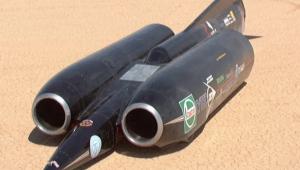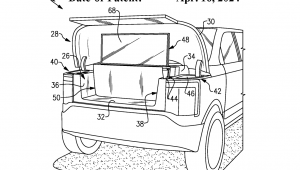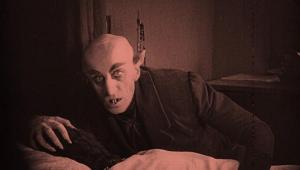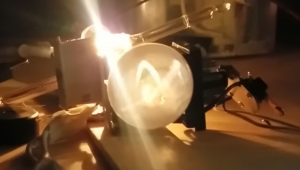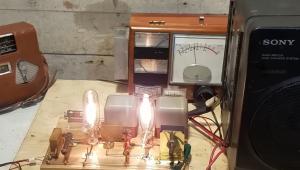Ottens and Máaz
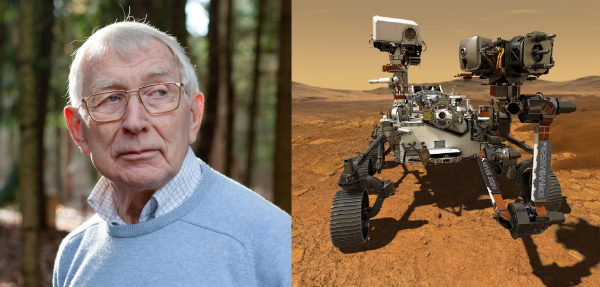
Magnetic recording was first patented in 1898 (US Pat. 661,619) by Danish engineer Valdemar Poulsen. The large, open-reel tape format later became a familiar sight in recording and broadcast studios, and even in a few high-end home set-ups. In the early 1960's, Philips had the idea of shrinking the format to allow greater portability, as well as low cost and low battery consumption. Sound quality was projected to be “reasonable” but hardly high fidelity. In fact, it was anticipated that voice dictation would be a primary application.
Philips engineer Lou Ottens was assigned the project, leading a team of twelve engineers. The result of their work, introduced in 1963, later named the Compact Cassette, was a magnetic tape format with two small reels encapsulated in a plastic shell. Hitherto, the quality of magnetic tape recording had relied on relatively wide tracks, and fast tape speed; the faster the tape speed, the higher the fidelity. For example, quarter-inch tape running at 7-1/2 ips and 15 ips was widely used. But cassettes used 0.15-inch inch tape running at 1-7/8 ips. The fidelity was so-so, but it achieved its goal of providing recording and playback in a small form factor
Of course, about two seconds after achieving its (modest) sonic goal, people started wondering how far the format could be pushed. In particular, could it be used to record high-fidelity stereo music? A problem like that is, to an engineer, like a bone to a dog. Worldwide, engineers steadily improved on the specs, gradually improving fidelity. The advent of Dolby noise reduction for cassettes provided a breakthrough in fidelity. Whether it was pre-recorded or a DIY mix tape, the result was a darn good music format. Products such as the Nakamichi Dragon cassette deck were marvels of their day, and even today, hold up pretty well.
Lou Ottens was first employed by Philips in 1952, and worked there for his entire career. He developed the cassette at the Philips Hasselt factory. He later became director of that facility; largely thanks to the growing popularity of the cassette, eventually over 5,000 people were employed there. Mr. Ottens died on March 6.
On March 2, the microphone mounted on the Perseverance rover's SuperCam mast captured the sound of a laser striking a rock about 10-feet away. The rock in question is named "Máaz" which translates to Mars in the Navajo language. (Perseverance is exploring a part of Jezero Crater the team has dubbed Canyon de Chelly, after a national monument on Navajo land in Arizona.) Alert readers will recall that I previously blogged about the microphones on Perseverance.
Admittedly, while we were all hoping for very sci-fi Phew! Phew! laser sounds, the actual sounds are more like a scientific Click Click. You can listen to a recording here. The sounds will be valuable in the analysis of the rock materials; differences in the intensity of the sound gives clues on the rock's hardness or if weathering coatings are present. Tapping on a hard or soft surface yields a different sound. For example, chalk and marble have an identical chemical composition - calcium carbonate - but very different physical properties. This kind of diagnosis will be essential when determining which samples to cache and ultimately return to Earth via the Mars Sample Return mission.
The other rover microphone was assigned the task of capturing the sounds of the entry, descent, and landing (EDL). Unfortunately, that data was not usable, but the microphone is now capturing ambient sounds. In this recording, a Martian breeze is audible, as are mechanical sounds of the rover operating on the surface.
Interestingly, with two microphones onboard, we have the opportunity for another first – the first stereo recording on another planet. Firing up the SuperCam and EDL microphones simultaneously should do the trick. Imagine a stereo recording of the Ingenuity helicopter taking flight and circling the rover.
In comparison to the feat of capturing the sounds of laser shots on Mars and conveying them to Earth, the task of building a cassette recorder might seem “quaint.” But, of course, both accomplishments are equally impressive. Just as the audio on Perseverance is cutting edge today, the invention of the cassette recorder was cutting edge in its day. Mr. Ottens took 19th-century technology and built it into a 20th-century product. The Perseverance engineers took 20th-century audio technology and moved it into the 21th-century. I can hardly imagine what 22nd-century engineers will do with the “quaint” technology presently sitting on the Martian surface.
For now, thank you Mr. Ottens. Job well done.
Mars Perseverance team, ditto.

